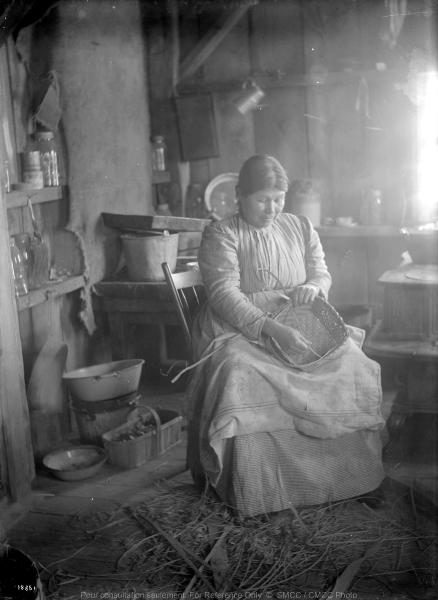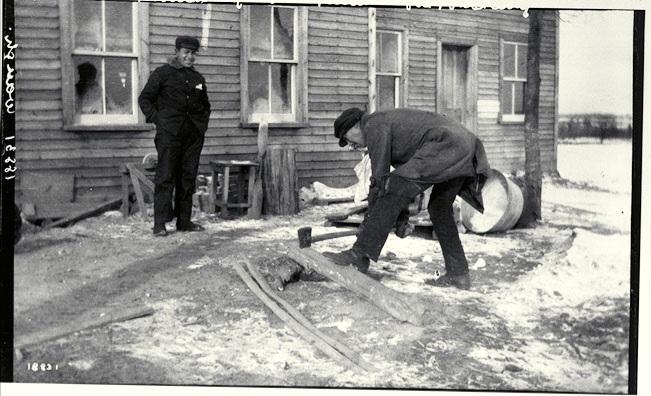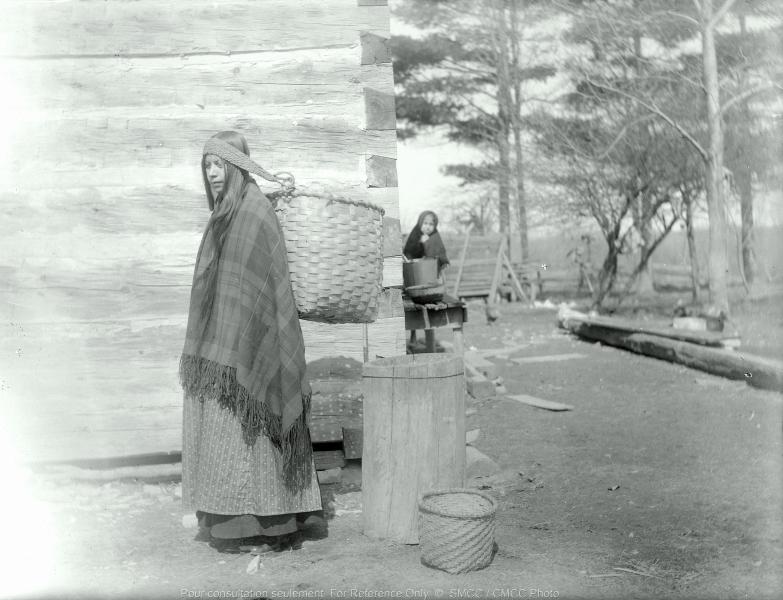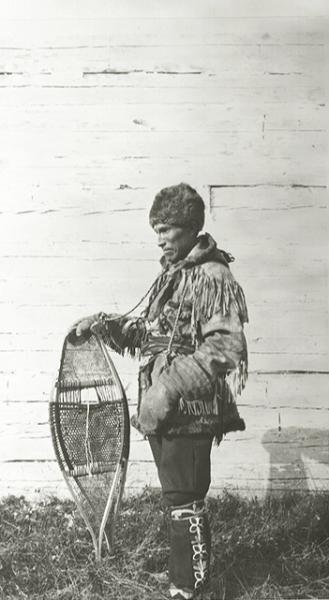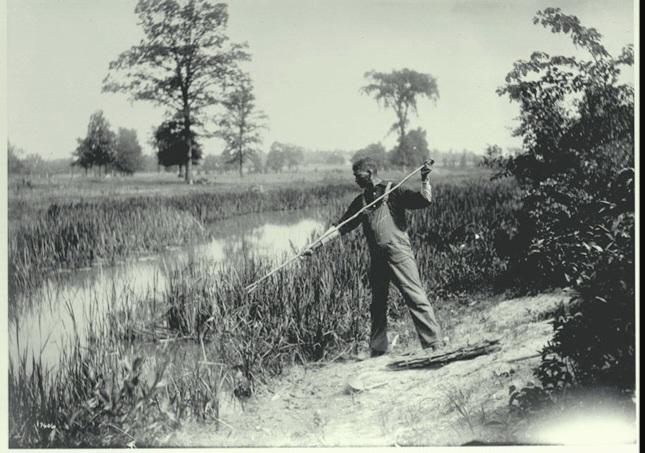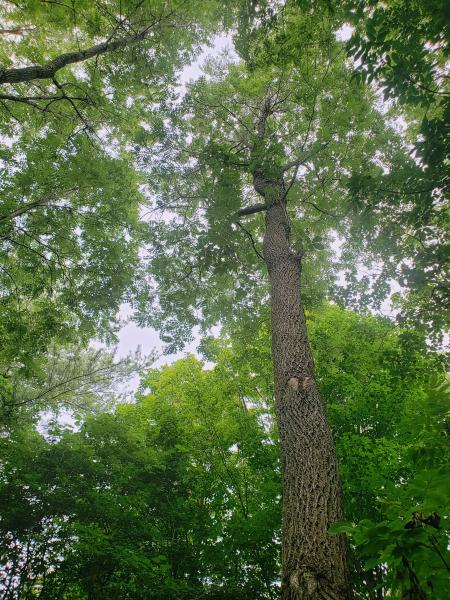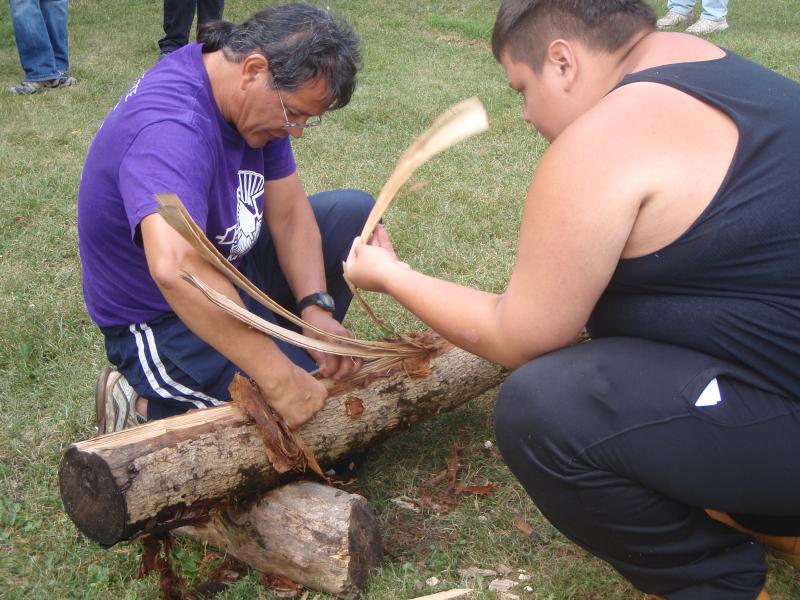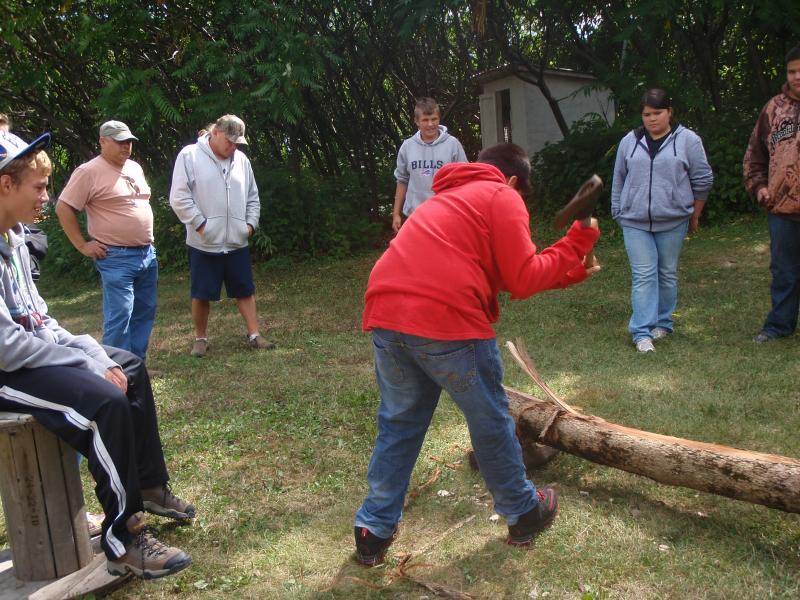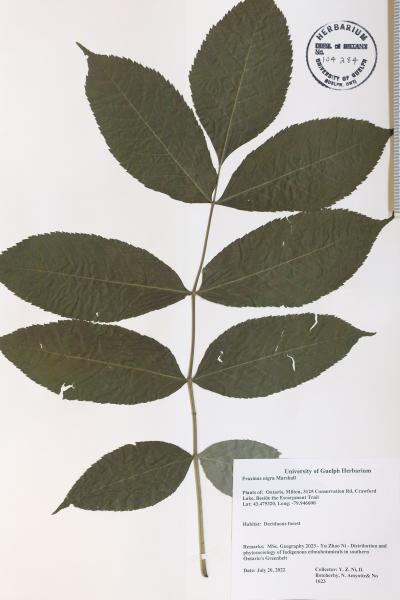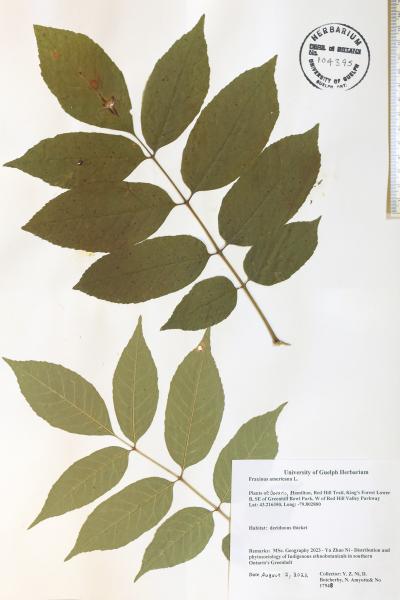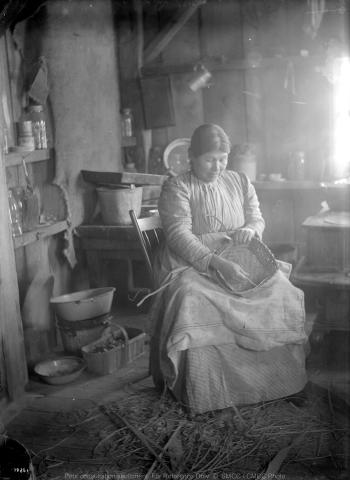
Names and Their Meanings
Black Ash - Fraxinus nigra
Green Ash - Fraxinus pennsylvanica
White Ash - Fraxinus Americana
Black Ash
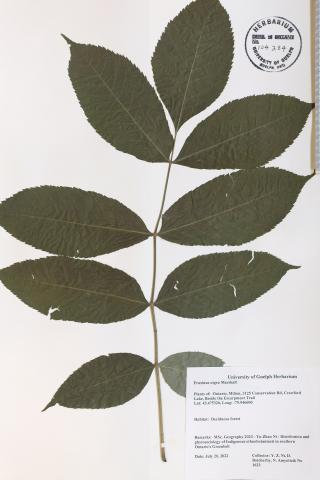
Description
Black ash is a deciduous tree that is native to eastern North America, from Eastern Manitoba and the Great Lakes to the Eastern seaboard, Newfoundland in the North, Virginia, West Virginia, Iowa to the South. The tallest of its members reach a height of ~ 20 meters when they are 100 years old. Black ash most often grows in moist to wet, mucky or shallow organic soils, such as swamps, floodplains, ravines, and on other poorly drained soils.
Conservation Status
S4 (Apparently Secure) in Ontario, and S5 (Secure) in NY
Green Ash
Description
Green ash is a fast-growing native, round-topped tree that grows to a height of 70 feet or more. They have compound leaves with 5 to 9 leaflets. The leaflets are oval/oblong in shape with a tapering base, and shiny green on top, with lighter green beneath. Green ash fruits are samaras that appear as clusters near the ends of the branches. They are most often found growing in bottomlands that are subject to flooding or overflow, on clay to sandy or silty soils. Green ash stems, seeds, and foliage provide food and habitat for cattle during calving season, rabbits, black birds, finches, cardinals, Cooper’s Hawk, and mountain bluebird.
Conservation Status
S4 (Apparently Secure) in Ontario and S5 (Secure) in New York
White Ash
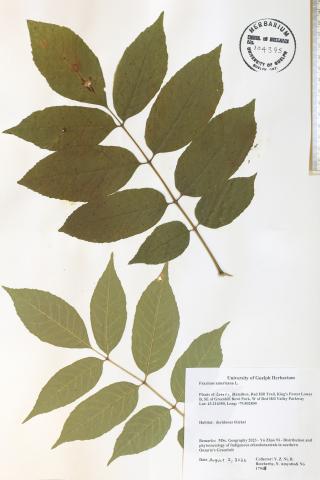
Description
White ash is a deciduous native to the eastern portion of North America, from Nova Scotia, west to Minnesota, and south to Texas and Northern Florida, northward into the southernmost parts of Québec and Ontario. It gets its name either from the whitish undersides of its otherwise deep green leaves, which turn a rich red, yellow, or purple in the fall – or, from its beautiful white wood. White ash is a stately tree that grows to 20- 30 meters tall, with a dense conical or rounded crown at maturity. White ash is often found growing along water, yet on deep, well-drained moist soils with other hardwoods – often on middle slopes, and slightly elevated ridges of flood plains.
Conservation Status
No status rank on NatureServe
Uses and stories, Harvesting Protocols
Black Ash is a cultural keystone tree for Haudenosaunee and Anishinaabe, alike. Its most prominent use is for basketry, and each culture has famous basket-makers who have innovated unique styles for both fancy and utility-baskets. Haudenosaunee make black ash baskets for utilitarian purposes, such as flint corn washing, laundry, pack baskets, tray baskets & etc. Black Ash wedding baskets are integral to traditional Haudenosaunee weddings. Fancy basket-makers are renowned for innovating fine detailing with small and smooth, perfectly symmetrical strips from the Black Ash tree. These baskets are very strong and rot resistant, owing to the nature of the tree itself, which thrives in swampy habitats!
Black ash has also been used for snowshoe frames, barrel hoops, storage barrels for food and clothing, canoe ribs, and material for woven chair seats. In Frederick Wilkerson Waugh’s studies, Chief John Arthur Gibson described Black ash as a good source for a green colored dye, when young. Katie Dybeau from Kahnawa:ke explained to Waugh that Black ash is an ingredient in medicines.
White ash is renowned for its strong, white wood, and has been used by Indigenous peoples and settlers to make tool handles, baseball bats and other tools of sport, furniture, doors, veneer, railroad ties, canoe paddles, bows, arrows, boats, posts, and for fuel for hundreds of years. It is the most valuable timber tree of the three. “aagimaak” means “snowshoe wood” in Anishinaabemowin, and as you can see from the photos below, white ash wood is used for framing snow shoes. Black ash bark has also been used as an outer covering for traditional dwellings such as wigwams, owing to its rot resistant qualities. White ash has also been used as an astringent medicine, laxative and tonic for women after childbirth; as a diuretic, an appetite stimulant, emetic and styptic, its bark tea for itching scalp and lice. White ash was also called spear timber, and used for making the spears for spear-fishing.
All three ashes are important keystones, most prominently for timber, craft, and utility, for snowshoes, furniture, tools, and other implements. But the most critical one is the Black Ash, for its unique growth pattern that separates its inner layers of wood into strips, that are pounded to separate, and then smoothed and trimmed to make some of the most enduring artistic and utilitarian elements of Haudenosaunee and Algonquian cultures: black ash baskets. The Emerald Ash Borer has caused widespread demise of this tree species, and great measures must be taken to recuperate its populations, or else the Emerald Ash Borer will extirpate the Black Ash tree population completely.
